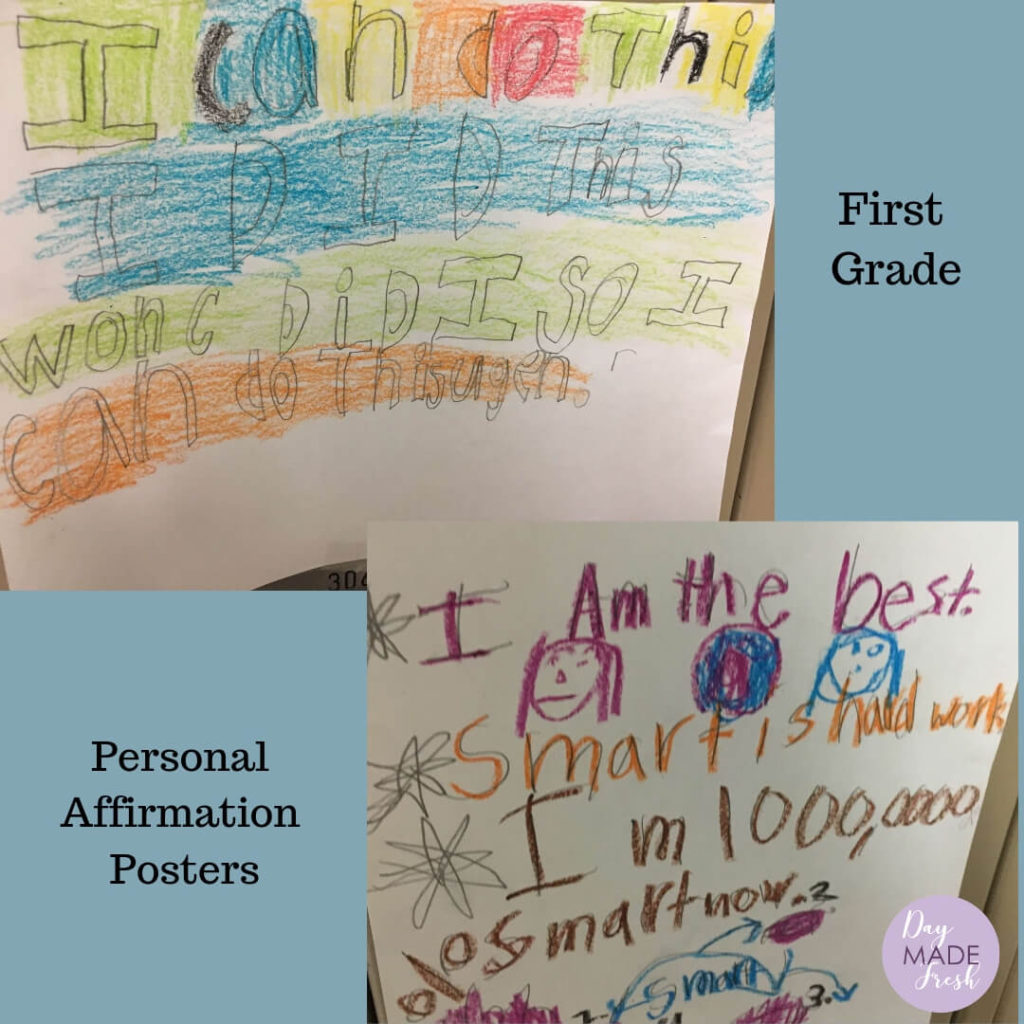When a child is in pain parents often say they wish they could take on the pain. They’d rather be in pain themselves instead of watching their child suffer in pain.
Have you ever felt like that watching your students take a high stakes test? Do you wish you could sit down and take the test for them?
We spend a large amount of our time coxing and guiding students through their learning. Giving them feedback that helps them make adjustments and learn along the way. Then we hit testing season and we can no longer be their guide. We have to stand by silently and hope we’ve done enough to prepare them.
You can help students cope with test anxiety with a few easy to use strategies.
Over the last 8+ years as a teacher I’ve often watched as strong students crumple when it comes to taking a test. Their test anxiety gets the better of them. I’ve learned that focusing on academics isn’t enough. We need to emotionally prepare students for state or district testing. So they approach the test with the confidence of a champion.
This post contains some affiliate links for your convenience. Click here to read my full disclosure policy.

Prepare for the test
Often students build up the test into something scary because it is unknown to them. As a third grade teacher, my students are taking our state test (MSTEP) for the first time. They’ve never experienced the test and this can overwhelm students. Especially students that thrive on knowing what to expect.
I’m not suggesting spending countless hours doing practice test questions. Instead, if available, do a practice test so on the day of the test it will feel more familiar and help them handle their test anxiety.
Our test is online so there are tools that go with the test to help students. If they’ve never experienced these tools they will probably not use them or will use them incorrectly.
Check to see if your online test has any highlight, zoom, or eliminate answer choices tools. Model for the class how to use them.
Have a brainstorming session, as a class, on when and when not to use the tools This will increase the likelihood of students using the tools correctly.
As you go through practice questions focus on the question type. Discuss the best approach to answer that type of question. They won’t see the same questions on the actual test, but they may see the same type of question.
Another way to counteract the fear of the unknown is to do a Q & A session. This allows students to ask questions and for you to eliminate any misconceptions. For quiet students, you can have them write out their questions and turn them into a questions box.
This discussion can help students with test anxiety, but be careful it doesn’t end up a “What if…” session. If students starting ask off the wall “what if” questions it’s time to wrap it up. They’re either wasting time or increasing their anxiety by worrying about unnecessary things. Having a box to collect questions can help with this as well. .
As many of these tests affect our teaching evaluation we can feel under pressure. If I’m not careful I know I can let that pressure show during test prep. Which could then increase student anxiety. It can be hard, but it goes better if you can approach each test prep conversation in a positive, easy-going tone.
If you’re worries ever do come through use it as a teaching moment to model how to handle test anxiety. It can normalize the feelings seeing adults feeling the same way.
Build Champion Habits
How knowledgable a person is doesn’t necessarily correlate with how successful they are. Instead, success comes from a person’s mindset…
Do they persevere through difficult tasks?
Do they have a growth mindset?
Can they focus and calm themselves during stressful situations?
Don’t despair if your students don’t currently have these mindsets. These mindsets or habits can be learned.
To develop their inner champion we must teach students the habits they need. Such as having a growth mindset and persevering through adversity. These habits will help them handle test anxiety.
Students will these habits will look at challenges or mistakes in a positive light. They have the mindset that working through challenges and learning from them helps grow your brain.
Curious about developing a growth mindset with kids. Check out my blog post for more ideas.
Another great resource you may already be using is ClassDojo. Their program includes videos with discussions and other activities. These help students learn the habits of having a growth mindset and perseverance. They also cover other social and emotional skills.
These activities don’t take a lot of time, but they have a big impact on students. I’ve used them with first graders and third graders. Both age groups have thoughtful discussions and take the ideas to heart.
The bonus is that building these habits will have a positive impact on all areas of kids’ lives not just on their test anxiety.

During testing, students are expected to work quietly and independently. Students can get in their head and anxiety or negative self-talk can take over. One way to combat this trend is to help students learn how to take control of their thoughts through mindfulness. The idea of mindfulness is to focus on the present. To self-regulate thoughts to observe ideas and emotions without judgment.
INCORPORATE mindfulness
Students need to experience mindfulness before testing occurs. This will give them time to practice, so they can use the strategy on their own when they feel overwhelmed. This is beneficial if the testing expectations include adults not communicating with students.
The key for this to work is to practice and model how to use mindfulness with students. There are a variety of resources available to help kids learn how to use mindfulness.
Mindfulness for Kids Resources:

- The Calm App: A meditation app that is currently offering free access to their paid subscription service for schools.
- Books: Search for mindfulness books for kids. Examples: Breathe by Ines Castel-Branco and A World of Pausabilities by Frank J. Sileo Ph.D.


- Activity Cards: Practice using activity or discussion cards. Examples: Mindful Games Activity Cards or RETHiNK Card Deck.

- GoNoodle & ClassDojo: Both websites offer mindfulness activities. They take students through a variety of meditation and movement activities. These help them focus in on their feelings and thoughts in a fun, kid-friendly way.
Make mindfulness a part of your normal classroom routine. It will bring benefits beyond helping students cope with test anxiety. It can even be a good activity for teacher self-care as well! 🙂
Positive Encouragement
Helping students develop a positive internal dialogue is important. It is also helpful to give kids positive encouragement from adults and peers. Positive encouragement on the day of testing can help students cope with test anxiety. It can also help model positive thoughts.

Students won’t be able to rely on someone else’s encouragement during the test. However, positive encouragement can give students a glow of positive feelings as they start the test. Just like energetic music can pump you up for a workout session.
My favorite way to give students positive encouragement is from themselves. It helps them find their inner voice or their inner champion!
Have students create affirmation posters with encouraging words that they hang up in the hall Students watch motivating ClassDojo videos. Then look at examples of motivational posters and finally brainstorm ideas. I have them focus on growth mindset quotes and phrases to reinforce that way of thinking. Finally, they create and decorate their own poster.
Positive Encouragement Ideas:
- Buddy Classroom: Pair up with another classroom and send each other positive notes, posters, or treats.
- Locker Notes: Write a variety of encouraging and growth mindset quotes and phrases on sticky notes. Stick them on students’ lockers or cubbies.
- Class Mantra: Create a mantra or chant that they can chant before starting an assessment. Our class mantra is: “I can do it! You can do it! We can do it!”
- Parent Notes: Have parents send in a note for their child. have students read them before taking their assessment or during a break. Be mindful of any rules about what students can do on a break.
- Encouraging Snacks & Materials: Provide students with pencils with encouraging phrases such as, “You’re write on track!” Provide a themed snack:
- “Do your beary best!” Teddy Grahams or Gummy Bears
- “Don’t go bananas…just do your best!” Banana
- “Donut stress. Take your time & do your best!” Donut or Donut Holes
- “Stick with your strategies!” Cheese Stick
- “Your Hard work really raises the bar!” Granola Bar
- “Remember to Re-Chex your Work!” Chex Cereal
How do you encourage your students during the testing season? Share below in the comments.
Create an Ideal Testing Environment
There is a lot that is prescribed for us during testing. Posters and other instructional materials often have to be covered, directions are scripted, our schedule is predetermined, etc. Each state’s testing expectations are different. No matter what the parameters are we can still create an ideal testing environment.
Read through the testing directions, pay close attention to the accommodations sections. This will give you what you can and cannot do for students. Sometimes accommodations can only apply to students with 504s or IEPs. There are also universal accommodations for any student. Another thing to check for is to see if you have to track or pre-identify accommodations for students.
On our state test, one of the universal accommodations is testing students in a smaller group. If you know a student makes noises or moves around a lot when working have them test in a small group. This benefits the individual student as well as the class as a whole.
Other accommodations to check on include:
- Changing the brightness on the computer screen
- Text to voice directions
- Oral directions by a teacher
- Breaks (They can help a student struggling get back on track!)
- Noise buffers
Before the testing session begins you can work to create a calming atmosphere to set the tone for the test. This helps students cope with test anxiety. Use relaxing music, yoga, a mindfulness activity, etc. to soothe anxieties and prepare students to focus. Save the pump up or dance music for the day before or after the test.
You know your students best. Trust your instincts of what will work for them. These ideas won’t work for all kids and you won’t have time to do all of them. I know I don’t! 🙂
If a testing session doesn’t go as planned know that it is one small moment.
The end of the school year is typically cram-packed with events and activities on top of testing. It can be hard to add in these types of activities. Don’t feel like you need to try to add all these ideas into your classroom all at once. You’ll probably end up overwhelming yourself and/or your students.
In an ideal world, I would start implementing these strategies from the beginning of the year. This is my goal for next year. For now, we’re making do with what we can get in.
The goal is to try to do one thing each day that helps students cope with test anxiety. Help kids to start seeing that we all have an inner champion!
What strategy works best for your students when it comes to test anxiety? Comment below, I’d love to hear your ideas.
Don’t forget to pin this article. So you can refer back to the different strategies to help students develop their inner champion and cope with test anxiety.
Related Posts:
How to Use Standardized Tests to Your Advantage
4 Simple Ways to Nurture Kids’ Growth Mindset

